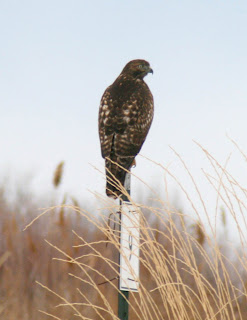For the past several years after our extended family New Years Day breakfast my brother in law Frank Clawson and I have gone birding. This year was no different. We started in his neighborhood in Fruit Heights and worked our way west to Kaysville Pond, West Farmington and ended up at Farmington Bay. We didn't get any unusual birds but saw a good variety. In fruit Heights we got: Lesser Goldfinch, Scrub Jay, Crow, Dark Eyed Junco, Robin, at Kaysville Pond we got: Mallard, American Wigeon, Green-winged Teal, Ring-necked Deck, Gadwall, Common Golden-eye, Hooded Merganser, A. Coot, Pied-billed Grebe, Ring-billed Gull, Great-tailed Grackle. West Farmington we passed a home with a bird feeder in the front yard with lots of activity, they had: Red-winged Blackbirds, Brewers Blackbirds, a Brown-headed Cowbird, House Sparrows, White-crowned Sparrows, Eurasian Collard Dove. Farmington Bay we saw: American Kestrel, Red-tailed Hawk, Northern Harrier, Great Blue Heron, American Coot, Ring-billed Gull, Herring Gull, assorted other gulls, Pied-billed Grebe, Song Sparrow, Bald Eagle, Canada Geese. Here are a few pictures first of all a Goose I wanted to call a Snow Goose but I am just not sure. Please help me out. Is my mystery goose a Snow Goose?
Mystery Goose is it a Snow Goose?
Lesser Goldfinch
American Wigeon, Coot, Mallard
American Wigeon
Assorted Ducks and Gulls
Mallards
Ring-necked Duck and Rig-billed Gull
Great-tailed Grackle
Hooded Merganser
Red-winged Blackbird, House Sparrows
Eurasian Collared Dove, Red-winged Blackbirds
Red-tailed hawk
American Coot, Ring-billed Gull
Great Blue Heron
Northern Harrier
Northern Harrier
American Kestrel






































